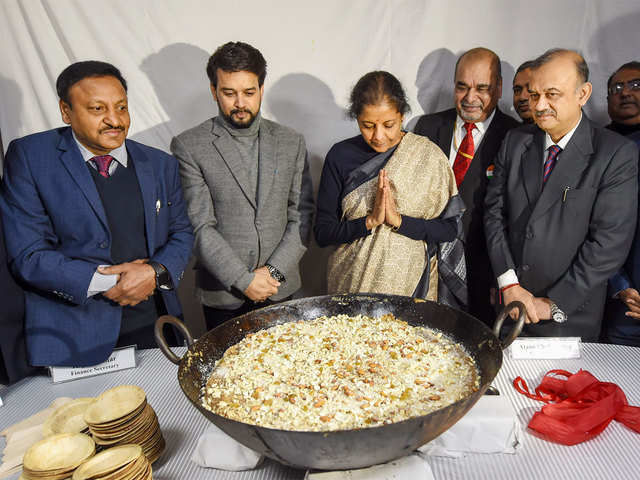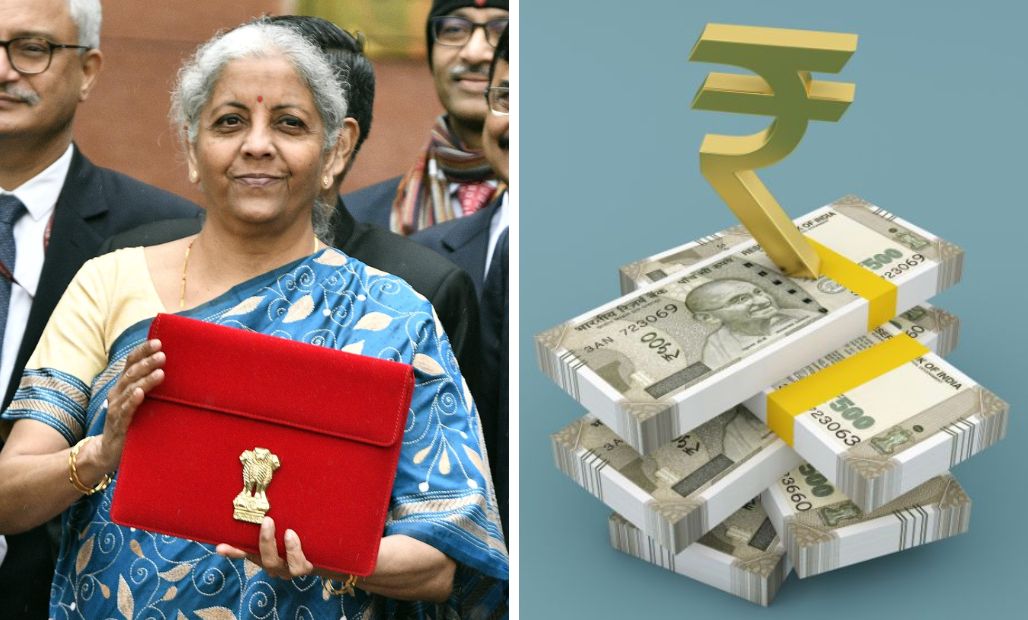On February 1, Finance Minister Nirmala Sitharaman unveiled the interim budget for the fiscal year 2024-25, marking her sixth consecutive budget presentation. The journey to this budget began with the traditional “halwa” ceremony on January 24, signifying the final stages of preparation. This interim budget, a short-term financial plan, will cover government expenses until a new administration takes charge after the elections.

Source: The Economic Times
Full Story:
Drafting the Budget:
The annual budget acts as a crucial financial roadmap established by the central government, outlining projected earnings and expenses for the upcoming fiscal year. This intricate process, managed by top bureaucrats from the Prime Minister’s Office and the Finance Ministry, commences over six months before the actual presentation. Following the “halwa” ceremony, the Finance Ministry enters a lock-in period to maintain the confidentiality of the final document. Unlike a regular budget, an interim budget is presented during election years to ensure smooth government operations until the new administration assumes control.

Source: Mint
Key Members of the Budget:
Nirmala Sitharaman: India’s first full-time female finance minister, Sitharaman, with a degree in economics, has the unique distinction of presenting six straight budgets.
TV Somanathan: Holding the position of finance secretary, Somanathan, a Ph.D. in economics, plays a pivotal role in managing the expenditure department.
Ajay Seth: As the secretary of the Department of Economic Affairs, Seth oversees critical initiatives such as sovereign green bond issuance and infrastructure finance.
Tuhin Kanta Pandey: The secretary of DIPAM is recognized for leading efforts to privatize Air India and overseeing the IPO of Life Insurance Corporation (LIC).
Sanjay Malhotra: Serving as the revenue secretary, Malhotra ensures tax revenue growth, contributing to fiscal consolidation.
V Anantha Nageswaram: As the chief economic advisor, Nageswaram advises Sitharaman on economic matters and plays a crucial role in the G20 discussions.
PK Mishra: A cabinet-ranking bureaucrat, Mishra manages vital policy matters for the government.
Arvind Shrivastava: The Finance and Economy officer in the PMO supervises the ministries of finance and corporate affairs.
Punya Salila Srivastava: Handling social and welfare verticals, Srivastava, a 1993-batch IAS officer, played a key role in briefing the media during the COVID-19 pandemic.
Hari Ranjan Rao: Supervising technology and governance verticals at the PMO, Rao previously served as the secretary of the former MP chief minister.

Source: NDTV
Interim Budget Highlights:
Government Priorities: Sitharaman emphasized the government’s focus on the poor, women, farmers, and youth. She highlighted initiatives such as enhancing farmers’ income, providing direct financial assistance under PM Kisan Samman Yojana, and offering crop insurance.
Economic Outlook: Sitharaman expressed confidence in the Indian economy, citing macroeconomic stability, robust investments, and controlled inflation. She emphasized the government’s focus on Governance, Development, and Performance (GDP).
Infrastructure Push: A major boost to infrastructure was announced, including increased capital expenditure for railways, aviation, and ports.
Taxation: The finance minister proposed maintaining current tax rates for both direct and indirect taxes, with no proposed changes.
Fiscal Deficit: Adjusting the fiscal deficit to 5.8% of GDP for FY24 and estimating it at 5.1% for FY25, Sitharaman highlighted fiscal responsibility.
Railway Corridors: Three new corridors were announced to enhance connectivity and development in port, energy, mineral, cement, and high-traffic density sectors.
Affordable Housing: An initiative to support deserving sections in acquiring or constructing homes was introduced.
Solar Power Initiative: Sitharaman introduced rooftop solarization, benefitting 1 crore households with up to 300 units of free electricity monthly, promoting sustainability and potential cost savings.



















































































